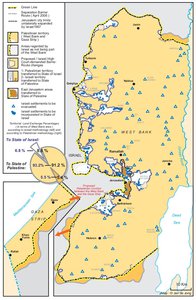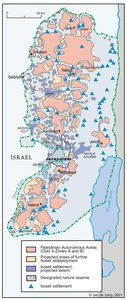SHARM ESH-SHEIKH AGREEMENT, 4 SEPTEMBER 1999
Map Details
The Wye River Memorandum transformed the first and second further redeployments of Oslo II into three phases, while placing the third at Israeli discretion. When Israel froze the Wye process, only one part of the three-phased two redeployments had been implemented. No discussion on the size or location of the third had begun. Labor’s new leader, General Ehud Barak won the May 1999 elections on a promise to withdraw from Lebanon, make peace with Syria and end the conflict with the Palestinians. Barak’s effort to undermine the Palestinian ‘bargaining position’ by stepping up negotiations with Syria failed when it became clear that his Syria ‘peace-plan’ demanded the annexation of the Syrian shore of Lake Tiberias (the Sea of Galilee). Though Barak would eventually withdraw unilaterally from Lebanon (in May 2000), the likelihood of his ending the Palestinian-Israeli conflict was all but ruled out by his pre-election pledges. The new Prime Minister’s conditions came in the form of four ‘Nos’: No to a return to 1967 borders (as stipulated in UNSC Resolution 242); No to the return of refugees (UNGA Resolution 194, UNSC Resolution 242); No to any Palestinian sovereignty in East Jerusalem (UNSC. Resolution 242); No to dismantling Israel’s illegal settlements (Geneva and Hague Conventions & UNSC Resolution 242). Thus, while boldly declaring his desire to terminate the conflict, Barak vowed to perpetuate its chief causes. Having inherited 42 new settlement ‘footholds’ from the previous government, Barak was able to gain US recognition as a ‘peace-maker’ by dismantling 10 uninhabited sites and one other, leaving 31 in place and the settlers content. In the meantime, he left the Wye Memorandum ‘on ice’ and followed the Netanyahu ploy of pursuing a one-step final arrangement leading to “a Palestinian entity that is less than a state.” Palestinian exasperation with Israeli prevarications and the increasingly poor performance of the PA had, by summer 1999, reached new heights. Opinion polls revealed a critical lack of trust in Israeli intentions and deep disappointment with the Oslo process. The original Oslo target date for reaching a final status agreement, May 4 1999, had passed with the PA in control of 9.1% of the West Bank and 60% of the Gaza Strip - being 12% of the entire OPT and a mere 2.8% of historic Palestine. As the second target date, 4 October 1999, approached, the PA announced plans to declare a state unilaterally, if Israel persisted in stalling. Palestinian insistence that overdue commitments be fulfilled led Barak to adopt his predecessor’s path of renegotiating the renegotiated. On 4 September 1999, Arafat and Barak signed the "Sharm Esh-Sheikh Memorandum on [an] Implementation Timetable of Outstanding Commitments of Agreements Signed and the Resumption of Permanent Status Negotiations.” Echoing those before it, the Memorandum saw Israel spread the unimplemented second and third phase redeployments of Wye into three new stages. Hence, the outstanding single second redeployment of Oslo II was diluted once more, while the third overdue redeployment, as at Wye, remained unscheduled. Again, no map was agreed upon and Israeli decisions later ensured the PA was denied the contiguity it sought and gained only a ‘thickening’ of its enclaves. In line with the Wye percentages, the new schedule required Israel to transfer 11% of the West Bank from Area C to B and 7.1% from B to A. The plan called for final status talks to commence on 13 September 1999 and conclude by 13 September 2000. On 10 September, Israel transferred 7% from Area C to B. Three days later final status talks were ceremonially launched at Erez crossing, Gaza. Belatedly, on 6 January 2000, the second transfer, of 2% from Area B to A and 3% from C to B, was made. Then, on 21 March 2000, Israel transferred the third installment - 6.1% from Area B to A and 1% from C to B. No progress was made with the third redeployment, by then nearly three years late. With the transfers, the PA came to control 17.2% of the West Bank (Area A) and hold civil responsibility in 23.8% (Area B), while Israel retained exclusive control over 59% (Area C). Nearly seven years on from the DoP, and long after the original five-year interim period had elapsed, 82.8% of the West Bank and 40% of the Gaza Strip remained firmly under Israeli military control. This was to become the ultimate jurisdictional extent of the Oslo-period redeployments; the sum total of Israeli withdrawals and the territorial achievement of the Palestinian national movement after a struggle of more than 50 years. It was also to be short-lived. Barak’s commitment to the settlement program was beyond question; a $370 million program for new army bases and bypass roads in the OPT was underway. In 2000 Barak would oversee more building in settlements than in West Jerusalem, Haifa and Tel Aviv combined.
Related Maps
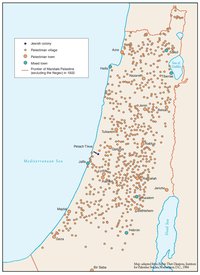
OTTOMAN PALESTINE, 1878
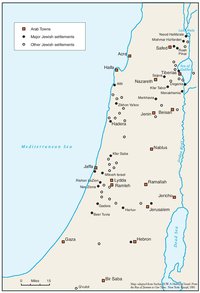
ARAB TOWNS AND JEWISH SETTLEMENTS IN PALESTINE, 1881-1914
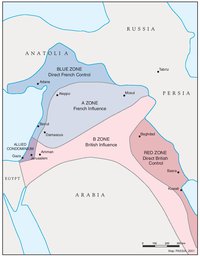
THE SYKES-PICOT AGREEMENT, 1916
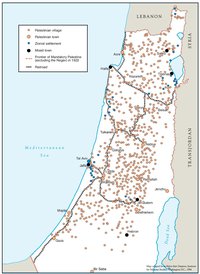
THE BEGINNING OF THE BRITISH MANDATE, 1920
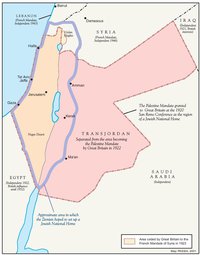
PALESTINE UNDER THE BRITISH MANDATE
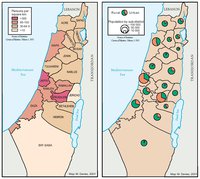
THE DEMOGRAPHY OF PALESTINE, 1931
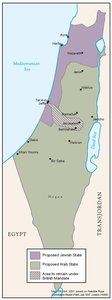
THE PEEL COMMISSION PARTITION PROPOSAL, 1937
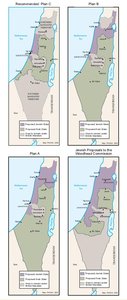
THE WOODHEAD COMMISSION PARTITION PROPOSALS, 1938
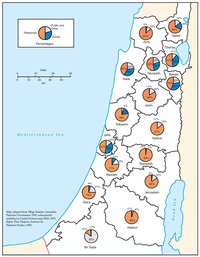
PALESTINIAN AND ZIONIST LANDOWNERSHIP BY SUB-DISTRICT, 1945
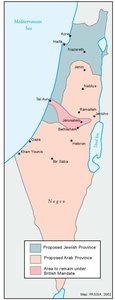
THE MORRISON-GRADY PARTITIONED TRUSTEESHIP PLAN, 1946
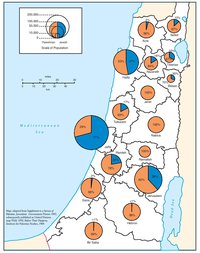
POPULATION OF PALESTINE BY SUB-DISTRICT, 1946
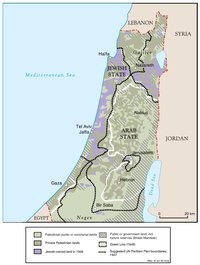
LAND OWNERSHIP IN PALESTINE, 1948

THE UNGA PARTITION PLAN, 1947 – THE 1948 WAR & THE 1949 ARMISTICE LINES
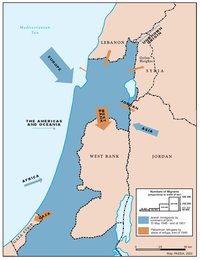
POPULATION MOVEMENTS, 1948-1951
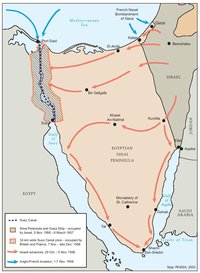
THE SUEZ WAR, 1956
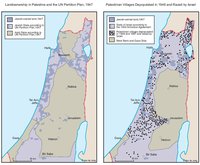
LAND OWNERSHIP IN PALESTINE AND THE UN PARTITION PLAN - PALESTINIAN DEPOPULATED AND DESTROYED VILLAGES, 1948-1949
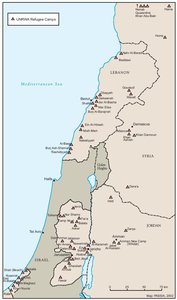
THE PALESTINIAN DIASPORA, 1958
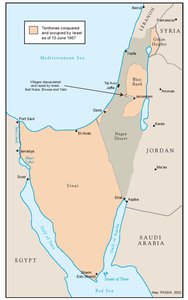
THE NEAR EAST AFTER THE JUNE 1967 WAR
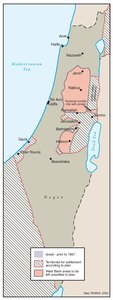
THE ALLON PLAN, JUNE 1967
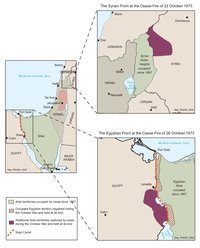
THE OCTOBER WAR, 1973
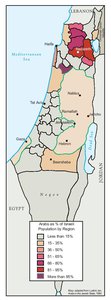
THE PALESTINIANS INSIDE ISRAEL, 1977

THE CAMP DAVID ACCORDS, 1978-1979
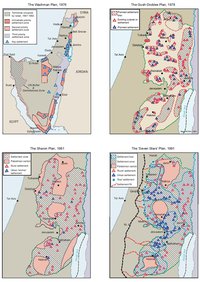
ISRAELI SETTLEMENT MASTER PLANS, 1976-1991
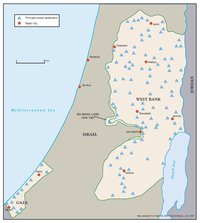
THE 1991 MADRID PEACE CONFERENCE & ISRAELI SETTLEMENTS
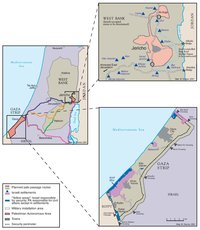
GAZA-JERICHO (OSLO I) AGREEMENT, CAIRO, 4 MAY 1994
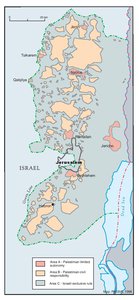
INTERIM (OSLO II) AGREEMENT, TABA, 28 SEPTEMBER 1995
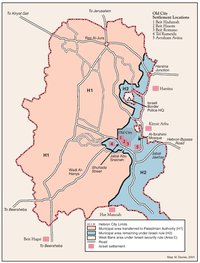
HEBRON PROTOCOL, 15 JANUARY 1997
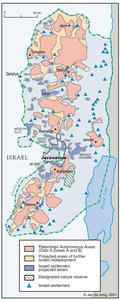
WYE RIVER MEMORANDUM, 23 OCTOBER 1998
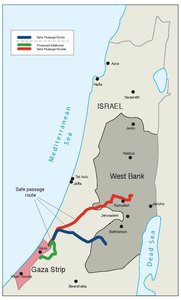
PROTOCOL CONCERNING SAFE PASSAGE BETWEEN THE WEST BANK AND THE GAZA STRIP, 5 OCTOBER 1999

GAZA, 2000
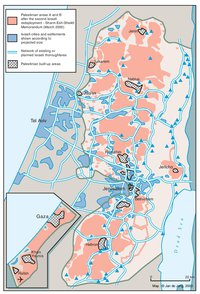
WEST BANK AND GAZA STRIP, MARCH 2000
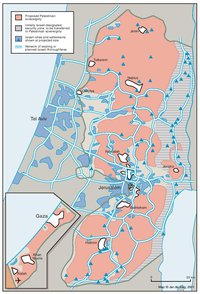
CAMP DAVID PROJECTION, JULY 2000
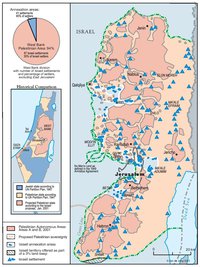
TABA TALKS PROJECTION, JANUARY 2001
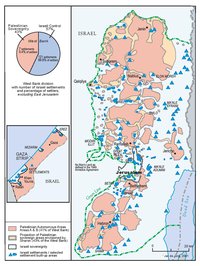
THE SHARON PROPOSAL, SPRING 2001
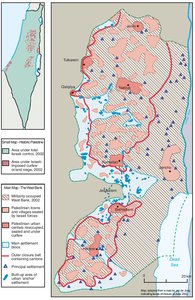
THE REINVASION OF THE PALESTINIAN TERRITORIES, 2001-2002
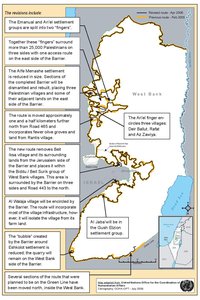
THE ROAD MAP, 2003
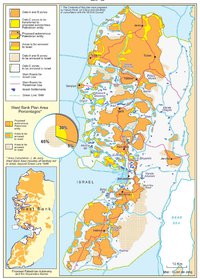
THE GENEVA INITIATIVE AND ACCORD, 2003
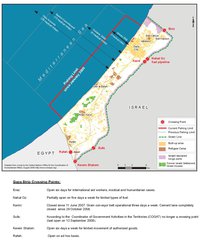
THE ISRAELI DISENGAGEMENT PLAN, 2003-2005
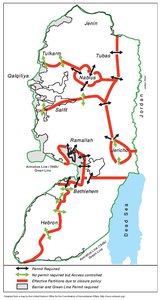
AGREED DOCUMENTS ON MOVEMENT AND ACCESS FROM AND TO GAZA, 2005
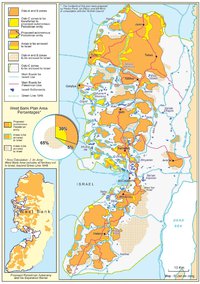
THE SETTLERS' PLAN FOR PALESTINIAN AUTONOMY, 2006
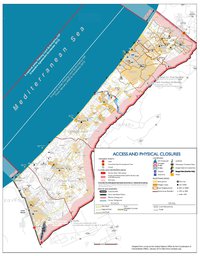
THE GAZA STRIP TODAY (2014)
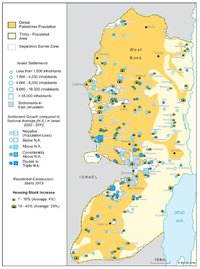
THE WEST BANK TODAY (2014)
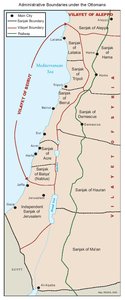
ADMINISTRATIVE BOUNDARIES
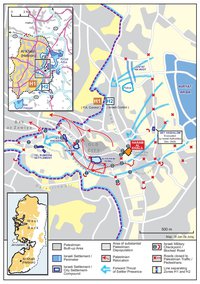
HEBRON
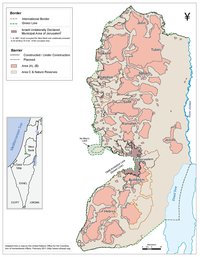
Area C
